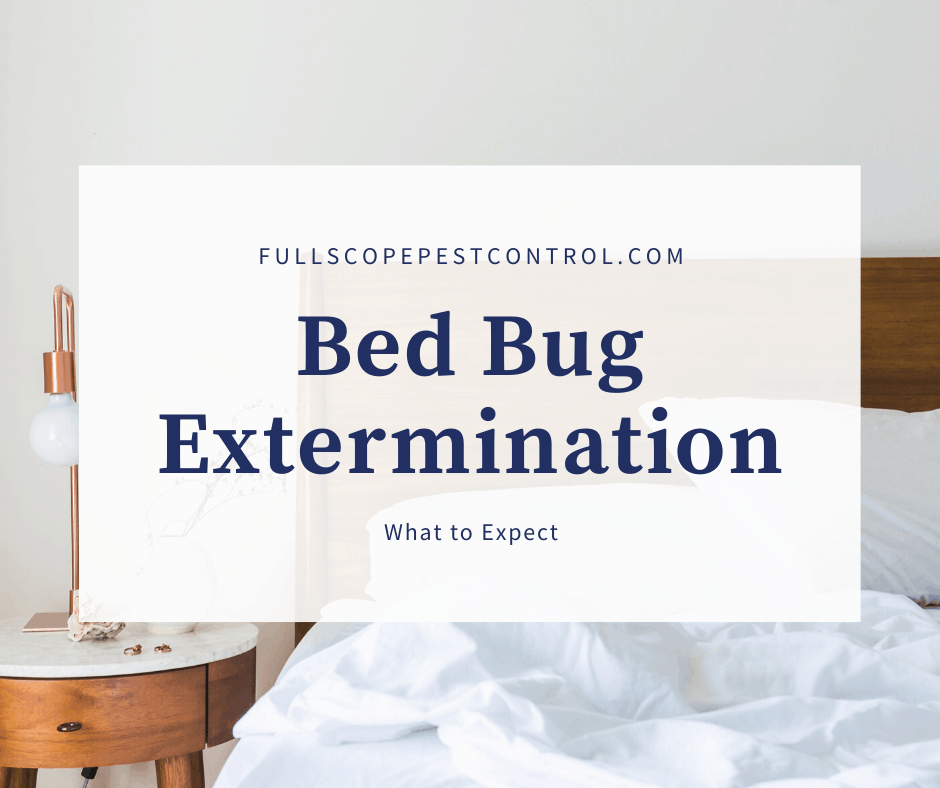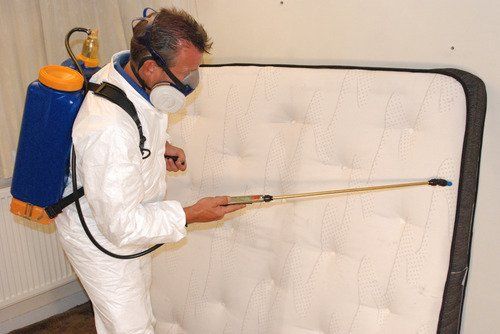Effective Bed Bug Heat Treatment for Homes and Businesses in Arlington
Wiki Article
Obtain Educated Regarding the Kinds of Bug Control Techniques and Their Advantages for House Owners
Comprehending the various bug control techniques offered to homeowners is important for reliable insect monitoring. Homeowners who are educated can make calculated choices that not only address parasite concerns however also boost the total quality of their living environment.Chemical Parasite Control Approaches
Chemical bug control methods are a crucial element of integrated insect management techniques for house owners looking for effective remedies to pest problems. These techniques involve the application of chemical substances created to eliminate or deter bugs that intimidate personal building, health, and comfort. Common chemicals used include pesticides, rodenticides, fungicides, and herbicides, each tailored to target details pests.The main advantage of chemical pest control is its quick effectiveness; several formulations offer immediate outcomes, lowering pest populaces dramatically quickly. Additionally, breakthroughs in chemical solutions have actually brought about products that are more environmentally pleasant and have lower toxicity degrees for non-target organisms when applied appropriately.

Organic Insect Control Strategies
Natural parasite control methods have gotten importance as house owners look for more secure and more sustainable alternatives to typical chemical techniques. Organic insect control techniques make use of natural killers, bloodsuckers, or microorganisms to take care of bug populations effectively. This technique is not only eco-friendly however also decreases the risk of injury to non-target species, including helpful pests and wild animals.One of the most usual organic control methods entails introducing natural killers right into the atmosphere. For example, ladybugs can be used to control aphid populations, while nematodes target soil-dwelling bugs like grubs. Furthermore, parasitoids-- microorganisms that survive or within a host-- can be used to control specific bug species by laying eggs inside them, ultimately resulting in their demise.
Another strategy is making use of biopesticides, which are stemmed from natural materials such as minerals, bacteria, or plants (bed bug exterminator). These items can effectively target insects while positioning very little danger to humans and pet dogs. Generally, biological parasite control techniques provide property owners with an efficient methods of insect management that straightens with eco-friendly principles, advertising a much healthier living environment while reducing reliance on synthetic chemicals
Mechanical Insect Control Methods
Mechanical pest control techniques incorporate a selection of techniques that physically avoid or eliminate bugs without the usage of chemicals. These techniques are particularly beneficial for home owners seeking ecologically pleasant options while ensuring the safety of their space.One typical method is making use of barriers, such as screens, webs, and traps, which avoid bugs from going into homes or certain locations. Installing window displays can efficiently keep insects out, while utilizing physical obstacles around gardens can discourage larger insects like site link deer or rabbits. In addition, mechanical catches made for rodents can catch and remove these pests without the need for poisonous compounds.
An additional efficient method includes making use of brooms and vacuums to remove bugs directly from surfaces. Regular cleaning and upkeep can dramatically reduce pest populaces by removing food resources and hiding spots. Utilizing tools like ultrasonic pest repellents can deter numerous parasites via audio waves that are unpleasant to them however faint to people.
Cultural Insect Control Practices
Cultural pest control techniques concentrate on customizing the environment and management strategies to produce conditions that are much less conducive to pest infestations. These techniques are basic in keeping a well balanced community and lowering the dependence on chemical treatments. By modifying farming techniques, property owners can efficiently discourage bugs while promoting plant wellness.One typical technique includes plant turning, which disrupts the life process of parasites by changing the sorts of plants grown in a particular location (bed bug exterminator). This not just decreases pest populaces but also enhances soil health and wellness. Additionally, intercropping-- growing diverse plants in proximity-- can confuse bugs and minimize their capacity to find their recommended host plants
Water monitoring is one more vital facet of social techniques. Correct watering methods can stop standing water, which offers as a reproduction ground for insects and other insects. Additionally, our website maintaining cleanliness around the home, such as frequently removing debris and food waste, can considerably decrease pest attraction.
Integrating these cultural techniques into a comprehensive parasite more administration method enables house owners to produce an environment that normally prevents pests, consequently enhancing the performance of other control approaches while promoting lasting gardening and landscape design.

Integrated Insect Management Approaches
Integrated Pest Management (IPM) stands for an all natural strategy that integrates various approaches to successfully manage pest populaces while lessening environmental impact. This technique incorporates biological, cultural, physical, and chemical methods to achieve lasting bug control. By evaluating pest populations and their all-natural opponents, IPM emphasizes tracking and identifying bugs before implementing control actions.Among the core principles of IPM is the usage of thresholds, which develop the level of pest task that requires intervention. This ensures that therapies are applied just when necessary, lowering the reliance on chemical pesticides. Organic control methods, such as presenting natural predators or parasites, operate in conjunction with social practices like plant rotation and environment adjustment to interrupt pest life process.
Moreover, IPM urges using least-toxic chemical choices when treatment is required, prioritizing products that position minimal threat to non-target microorganisms and the setting. For house owners, embracing IPM approaches not just enhances the effectiveness of insect administration but also advertises a much healthier living environment, fostering biodiversity and reducing chemical direct exposure. Eventually, IPM encourages homeowners to make educated choices that balance insect control with environmental responsibility.
Final Thought
In verdict, understanding the different pest control techniques encourages property owners to make enlightened decisions relating to pest monitoring. Each method-- chemical, biological, mechanical, social, and incorporated insect administration-- supplies unique advantages that cater to different requirements and choices.Recognizing the numerous pest control methods offered to home owners is important for efficient parasite management.Chemical bug control techniques are an essential component of integrated pest management techniques for house owners seeking reliable remedies to pest problems. Overall, biological pest control strategies provide homeowners with an efficient means of parasite monitoring that straightens with ecological principles, advertising a much healthier living setting while lowering dependence on synthetic chemicals.
Cultural pest control practices focus on modifying the setting and monitoring techniques to create problems that are much less favorable to pest infestations.In verdict, recognizing the different insect control techniques empowers home owners to make enlightened choices pertaining to pest administration.
Report this wiki page